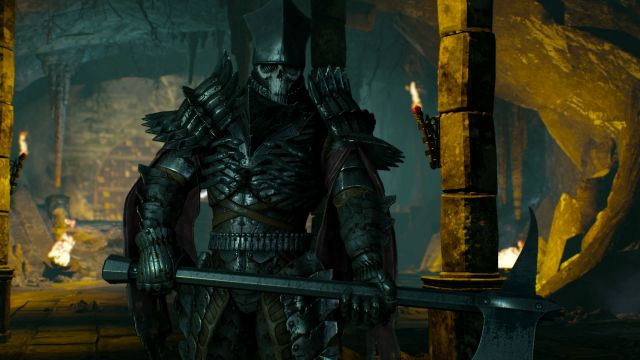

Jump, land safely, step on a spike. Jump, land safely, step on a spike. Jump, miss the landing, die. This is how I spent most of my time with 1001 Spikes, one of the most brutally difficult platformers in recent memory. It’s an exercise in twitch platforming and tried patience, where missing just one stupid jump means starting all over again. But when you finally finish a stage after numerous attempts, it provides a great sense of victory that makes your many gruesome deaths worthwhile.
Adventurer Aban Hawkins sets out to find his father in the country of Ukampa, a land full of titular spikes, boulders, and flying darts--and this simple setup is all that’s needed to propel Aban through his difficult, rewarding adventure. There is never a dull moment in 1001 Spikes, and not just because of the constantly tricky platforming. Mechanics continually evolve between stages: spikes that once sat atop platforms become moving or hidden traps; boulders that were once cracked rocks become polished, high-speed death-rollers. Some stages even use special traps, like a hopping totem pole that only moves opposite of the direction you’re facing, to throw you off track. With every new level comes a new idea, and that means you’re intrigued anew by each stage.
It’s not just levels that evolve, though--you’ll learn just how much Aban can do as you continue playing. He can jump small or large distances, and throw knives, but these simple actions go so much deeper. One stage full of flying darts seemed impossible to overcome, until I realized that my throwing knives could deflect darts. Learning how to interact with various obstacles or dodge a particular trap goes hand-in-hand with surviving, creating a rewarding experience. These epiphanies characterize 1001 Spikes just as much as your deaths.
But for all the joy of discovery in 1001 Spikes, there is just as much agony in defeat. You're allowed a couple mistakes in early levels, even with Aban’s one-hit death weakness; a missed jump often just drops you to a lower platform. By the game’s final levels, though, the magic wears off. Even after learning the depths of Aban’s movements and the game’s traps, you’ll be faced with pure, rage-inducing difficulty. Like a receiver weaving through a defensive line, you have the slightest of gaps to move through, and until you memorize the location of every single trap, you have no hope of finishing. As levels begin to sap hundreds of lives from you, fun is replaced by frustration.
That’s largely because 1001 Spikes has its fair share of cheap deaths. The opening stages serve as tutorials--you won’t know to test platforms for spikes until a few take you by surprise. But there are still instances where what you learn doesn’t help. There are times when the layout of the level becomes too much for muscle memory or on-the-fly trap recognition. Trial and error isn’t inherently a bad thing, but after dying just inches from the level’s end dozens of times in a row, that final push to the finish becomes a slog.
Intense difficulty aside, 1001 Spikes provides a way to blow off steam with local multiplayer. These multiplayer modes, unlocked as you move through the story mode, are an absolute blast. The same spike-shifting, dart-spitting mechanics are in place, but they have more open space and fewer traps overall. Golden Vase is a keep-away game, where the players collect coins while the titular vase is in their possession; Tower of Nannar is a multi-level climb, where players must reach the top of the tower together. These modes are quick and enjoyable, resulting in shouts of “just one more round!” across the couch. And for each of those rounds, you’ll earn coins that can be used to purchase additional lives, costumes, and characters. Better yet, those characters often come with unique abilities--Zombie can lob his ranged attack, while Commander Video has different jump physics altogether--that add some variety to how multiplayer plays out.




 Luigis Mansion 1: Step Forward and 2: Steps Back?
Luigis Mansion 1: Step Forward and 2: Steps Back?
 How to complete Dragon Age Inquisition Emprise Du Lion Side Quest Guide
How to complete Dragon Age Inquisition Emprise Du Lion Side Quest Guide N-Controls Owner has been through struggles before
N-Controls Owner has been through struggles before The Witcher 3: Wild Hunt Monster Guide: Simplest Way To Beat Nithral Monster
The Witcher 3: Wild Hunt Monster Guide: Simplest Way To Beat Nithral Monster Name Your Own Price On Massive Bundle of Programming Courses
Name Your Own Price On Massive Bundle of Programming Courses